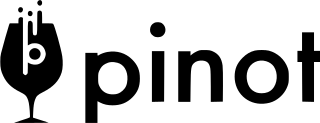
PostgreSQL, also known as Postgres, is a free and open-source relational database management system (RDBMS) emphasizing extensibility and SQL compliance. PostgreSQL features transactions with atomicity, consistency, isolation, durability (ACID) properties, automatically updatable views, materialized views, triggers, foreign keys, and stored procedures. It is supported on all major operating systems, including Linux, FreeBSD, OpenBSD, macOS, and Windows, and handles a range of workloads from single machines to data warehouses or web services with many concurrent users.

Db2 is a family of data management products, including database servers, developed by IBM. It initially supported the relational model, but was extended to support object–relational features and non-relational structures like JSON and XML. The product name was originally styled as DB2 until 2017, when it changed to its present form.
In computing, Open Database Connectivity (ODBC) is a standard application programming interface (API) for accessing database management systems (DBMS). The designers of ODBC aimed to make it independent of database systems and operating systems. An application written using ODBC can be ported to other platforms, both on the client and server side, with few changes to the data access code.
In computing, online analytical processing, or OLAP, is an approach to quickly answer multi-dimensional analytical (MDA) queries. OLAP is part of the broader category of business intelligence, which also encompasses relational databases, report writing and data mining. Typical applications of OLAP include business reporting for sales, marketing, management reporting, business process management (BPM), budgeting and forecasting, financial reporting and similar areas, with new applications emerging, such as agriculture.
In computing, a materialized view is a database object that contains the results of a query. For example, it may be a local copy of data located remotely, or may be a subset of the rows and/or columns of a table or join result, or may be a summary using an aggregate function.

Virtuoso Universal Server is a middleware and database engine hybrid that combines the functionality of a traditional relational database management system (RDBMS), object–relational database (ORDBMS), virtual database, RDF, XML, free-text, web application server and file server functionality in a single system. Rather than have dedicated servers for each of the aforementioned functionality realms, Virtuoso is a "universal server"; it enables a single multithreaded server process that implements multiple protocols. The free and open source edition of Virtuoso Universal Server is also known as OpenLink Virtuoso. The software has been developed by OpenLink Software with Kingsley Uyi Idehen and Orri Erling as the chief software architects.
A column-oriented DBMS or columnar DBMS is a database management system (DBMS) that stores data tables by column rather than by row. Benefits include more efficient access to data when only querying a subset of columns, and more options for data compression. However, they are typically less efficient for inserting new data.
SAP IQ is a column-based, petabyte scale, relational database software system used for business intelligence, data warehousing, and data marts. Produced by Sybase Inc., now an SAP company, its primary function is to analyze large amounts of data in a low-cost, highly available environment. SAP IQ is often credited with pioneering the commercialization of column-store technology.
An embedded database system is a database management system (DBMS) which is tightly integrated with an application software; it is embedded in the application. It is a broad technology category that includes:

IBM Netezza is a subsidiary of American technology company IBM that designs and markets high-performance data warehouse appliances and advanced analytics applications for the most demanding analytic uses including enterprise data warehousing, business intelligence, predictive analytics and business continuity planning.

Exasol is an analytics database management software company. Its product is called Exasol, an in-memory, column-oriented, relational database management system

Vertica is an analytic database management software company. Vertica was founded in 2005 by the database researcher Michael Stonebraker with Andrew Palmer as the founding CEO. Ralph Breslauer and Christopher P. Lynch served as CEOs later on.
The following tables compare general and technical information for a number of online analytical processing (OLAP) servers. Please see the individual products articles for further information.
Java Database Connectivity (JDBC) is an application programming interface (API) for the Java programming language which defines how a client may access a database. It is a Java-based data access technology used for Java database connectivity. It is part of the Java Standard Edition platform, from Oracle Corporation. It provides methods to query and update data in a database, and is oriented toward relational databases. A JDBC-to-ODBC bridge enables connections to any ODBC-accessible data source in the Java virtual machine (JVM) host environment.
The following is provided as an overview of and topical guide to databases:

SingleStore is a proprietary, cloud-native database designed for data-intensive applications. A distributed, relational, SQL database management system (RDBMS) that features ANSI SQL support, it is known for speed in data ingest, transaction processing, and query processing.

SAP HANA is an in-memory, column-oriented, relational database management system developed and marketed by SAP SE. Its primary function as the software running a database server is to store and retrieve data as requested by the applications. In addition, it performs advanced analytics and includes extract, transform, load (ETL) capabilities as well as an application server.

Apache Pinot is a column-oriented, open-source, distributed data store written in Java. Pinot is designed to execute OLAP queries with low latency. It is suited in contexts where fast analytics, such as aggregations, are needed on immutable data, possibly, with real-time data ingestion. The name Pinot comes from the Pinot grape vines that are pressed into liquid that is used to produce a variety of different wines. The founders of the database chose the name as a metaphor for analyzing vast quantities of data from a variety of different file formats or streaming data sources.
DuckDB is an open-source column-oriented relational database management system (RDBMS) originally developed by Mark Raasveldt and Hannes Mühleisen at the Centrum Wiskunde & Informatica (CWI) in the Netherlands and first released in 2019. Those behind the project say it has millions of downloads per month. It is designed to provide high performance on complex queries against large databases in embedded configuration, such as combining tables with hundreds of columns and billions of rows. Unlike other embedded databases DuckDB is not focusing on transactional (OLTP) applications and instead is specialized for online analytical processing (OLAP) workloads.
YDB is a distributed SQL database management system (DBMS) developed by Yandex, available as open-source technology.









